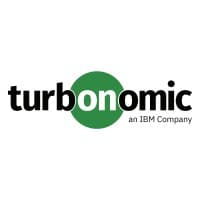Cloud migrations are expensive undertakings, with the average server costing between $1,000 and $3,000 to move. And complicated migrations can cost up to $15,000 per server. MSPs looking to add cloud migrations to their list of services need a way to cut down on that cost to be competitive. Cloud and application migration tools can help MSPs lower costs while also improving the migration experience for their clients.
Choosing Cloud Migration Tools
- What Do Cloud Migration Tools Do?
- MSP Considerations for Cloud & App Migration Tools
- Top Cloud & Application Migration Tools
- Don’t Forget About Post-Migration Management
What Do Cloud Migration Tools Do?
Migration tools are a set of software solutions that help businesses organize and manage the transfer of data and applications between their on-premises environments and the cloud. They’ll typically encrypt and backup the data before moving it, keeping it secure and preventing data loss. Many cloud migration platforms also include automated discovery tools that analyze all of the applications and data on a network to identify dependencies and determine the best order to move them in.
Also Read:
MSP Considerations for Cloud & App Migration Tools
MSPs looking for cloud migration tools should consider the length of the license, the number of users, vendor compatibility, and automation features.
License length
Many cloud migration tools offer short-term licenses for businesses that want to handle their own migrations. However, MSPs that plan to do multiple cloud migrations should look for tools that provide longer terms or provide discounts for signing longer contracts. Not only will this help them save money in the long run, but they’re more likely to get a dedicated account rep for when they need support.
Number of users
Some cloud migration tools price their services based on the number of users. For MSPs, this could be problematic, especially if they give their clients access while the migration is ongoing. MSPs should look at migration tools that make it easy to add and remove users as needed and won’t be cost-prohibitive for multiple users.
Also Read: MSP Survey Reveals Competitive Challenges in Cloud Era
Vendor compatibility
Unless an MSP is planning to do all of their cloud migrations with one cloud provider, they need cloud migration tools that are compatible with multiple environments. Most cloud vendors offer free migration tools, but they typically only work with their platform. MSPs should choose vendor-agnostic tools, so they can make the best recommendations for their clients.
Automation
Because MSPs are likely handling more than one cloud migration at a time, they need automation tools to speed up the process and help it run more smoothly. The platforms they choose should also include artificial intelligence (AI), so they can make better decisions and optimize their clients’ cloud environments.
Also Read: Why Channel Partners Need Automation from IT Vendors
Top Cloud & Application Migration Tools
MSPs looking for cloud and application migration tools should consider the following platforms, chosen for their positive user reviews and the quality of the features they provide.
AWS Cloud Migration Services
While not vendor agnostic, AWS Cloud Migration services allow MSPs to move workloads of any kind from on-premises or other cloud environments onto AWS. The platform includes guidance from AWS experts on the best practices for each phase of the migration. Plus, it’s free for the first 90 days, so MSPs can use it for their clients without extra spend. They will, however, need to learn a new system if their clients don’t want to migrate to AWS. There’s even an AWS training and certification that MSPs can earn to ensure they understand the full capabilities of the platform and can better serve their clients, and that certification is also a good marketing tool.

Pros
- Free for the first 90 days
- Fast data transfers
- Easy to use for large migrations
Cons
- Only works with AWS cloud
- Steep learning curve, especially if users are unfamiliar with the AWS cloud platform
Azure Migrate
Azure Migrate, similar to AWS, only works with migrations to the Azure cloud, but it’s nice for MSPs to have in their arsenal, considering it’s free for users with an Azure subscription. End-to-end visibility identifies dependencies between applications, and the platform offers insights and recommendations to ensure MSPs migrate their clients’ workloads in the correct order. Free Azure tools include dependency visualizations and app modernization, but there are also partner tools that MSPs can choose from, although they may come at a cost. Azure also takes their security seriously, spending over $1 billion annually and employing more than 3,500 security experts.

Pros
- Free with Azure subscription
- Easy to use and includes lots of migration resources
- Helpful user guides available
Cons
- Only works on Azure cloud platform
- Some users would like more detailed real-time information, like CPU usage
VMware
VMware’s cloud migration tools are vendor agnostic, so MSPs can work with clients, no matter which cloud environment they prefer. Because the compute, network, Kubernetes, and storage stacks are the same on each cloud, MSPs only have one tool they have to learn. The tools also include cloud optimization and cost control to keep the migration within budget. Virtual machines and containers are included, so developers already have the infrastructure they need to modernize applications. Pricing varies depending on the cloud provider, and some include free trials.

Pros
- Same technology no matter which cloud provider clients choose
- Minimizes downtime for organizations
- Decreases migration timeline
Cons
- Pricing can get complicated because it’s different for every provider
- The platform has a fairly steep learning curve
Turbonomic
Turbonomic by IBM offers application resource management for cloud migrations. It uses AI to optimize performance and costs in real-time and eliminates the need for manual troubleshooting. By identifying how each application gets its resources, MSPs can identify dependencies and create a migration plan that will minimize downtime. It is compatible with both AWS and Azure public clouds and works both during and after the cloud migration to keep costs low and performance high. There are three different pricing tiers to choose from after the free trial.

Pros
- Compatible with both AWS and Azure clouds
- Provides good visibility into the cloud environment
- Automates a large number of manual tasks
Cons
- Can be cost prohibitive for some users
- No options for role-based permissions
Carbonite Migrate
Carbonite Migrate offers unlimited testing of the new cloud environment to ensure all apps perform correctly before shutting down the on-premises versions, so businesses can avoid downtime. It replicates data sets and applications in real time, then optimizes the migration order to account for dependencies. Compatible with multiple cloud providers, the platform prevents vendor lock-in and allows MSPs to work with a variety of clients, no matter their preferred cloud environment. Carbonite has a partner program that MSPs can take advantage of to get flexible subscription plans, renewal incentives, and other perks.

Pros
- Partner program is perfect for MSPs
- Smooth migration, especially in Windows environments
- User friendly interface
Cons
- Can be difficult to use for multicloud environments
- Some vendors struggled with migrations involving Linux environments
Google Migration Services
Google Migration Services is another vendor-controlled migration tool, but because many of the migration tools have no cost or free trial periods, it’s worth learning for MSPs. Discovery and assessment tools help businesses determine which of their assets are best suited for the cloud and which applications they should prioritize. The platform encrypts data both in motion and at rest to keep it secure during migration. Google provides a free cost assessment, and their experts work with organizations to create a migration plan that will fit their needs and reduce risk.

Pros
- Free trial periods for many of the migration tools
- Specializes in data migrations
- Easy to scale as businesses grow
Cons
- Only compatible with Google Cloud
- Doesn’t include as many features as similar tools
Corent SurPaaS
Corent SurPaaS is a cloud automation platform that simplifies cloud migrations and helps MSPs lower cloud spend for their clients. Detailed assessments identify the order in which apps should be migrated, and then the SmartShift feature re-architects and re-platforms the application to improve cloud performance. The platform automates the application modernization process and automatically migrates appropriate workloads to containers and Kubernetes. It supports most public cloud providers, except Google Cloud for migration, and includes migration for both servers and applications. There are also options for post-migration management.

Pros
- Compatible with most public cloud providers
- Helpful and responsive customer service
- Easy to create a migration strategy
Cons
- The platform can take some time to learn
- Doesn’t support migration to Google Cloud
Micro Focus PlateSpin Migrate
Micro Focus PlateSpin Migrate provides data migration with many automated features and tasks. It includes testing as part of every server migration to avoid data loss or corruption. Because the system supports both AWS and Azure cloud platforms, as well as Windows and Linux environments, both hybrid and multi-cloud solutions are available. MSPs who opt for PlateSpin Migrate will likely also need an application migration tool at their disposal. The platform can migrate as many as 10,000 servers at a time, and it includes discovery features to ensure the organization moves all the necessary data.

Pros
- Easy to learn and use
- Automation features reduce manual errors
- Includes solid security measures
Cons
- Doesn’t support Google or IBM clouds
- Some users experienced delays when dealing with customer support
Don’t Forget About Post-Migration Management
Once an MSP has migrated their client’s data and applications to the cloud, their work likely isn’t over. They should then think about cloud management tools to help their customers optimize their cloud performance and avoid wasted spend. When choosing a cloud migration tool, MSPs should consider vendors that offer post-migration management as well, so they don’t have to learn a completely new tool when the migration is over.

